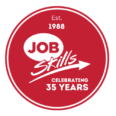
Effective HR practices are the backbone of any successful organization. By focusing on recruitment, employee engagement, performance management, training and development, and workplace culture, you can create a strong foundation for your company. Continually assess and improve your HR strategies to keep up with changing business environments and employee needs.
This blog will guide you through essential HR practices focusing on recruitment, employee engagement, performance management, training and development, and workplace culture. By the end, you’ll have actionable insights to transform your HR strategies and enhance your organization’s effectiveness.
Crafting an Effective Job Description
A well-crafted job description is the first step in attracting the right candidates. Clear and concise job descriptions not only help potential applicants understand the role but also ensure that you attract individuals with the necessary skills and competencies. Start by outlining the primary responsibilities and required qualifications. Use straightforward language and avoid jargon to make the description accessible to a wider audience.
Highlighting essential skills and competencies is crucial. Instead of listing every possible qualification, focus on the top five to seven that are absolutely necessary for success in the role. This helps in filtering out unsuitable candidates early in the process, saving time and resources.
Lastly, make sure your job description reflects the company culture. If your workplace is dynamic and fast-paced, mention it. This helps candidates assess whether they would be a good fit, further refining your applicant pool.
Streamlining the Hiring Process
An efficient hiring process can significantly reduce time-to-fill and improve the quality of hires. Start by developing a standardized screening process that includes initial phone screenings, skill assessments, and structured interviews. Standardization ensures consistency and fairness, making it easier to compare candidates objectively.
The use of technology and AI in recruitment processes can streamline operations even further. AI-driven tools can quickly scan resumes for key qualifications, schedule interviews, and even conduct initial video interviews. This not only speeds up the process but also reduces human bias.
Enhancing candidate experience is equally important. Frequent communication and transparency about the hiring timeline keep candidates engaged and reduce drop-off rates. Automated email updates and a dedicated point of contact can make the process smoother and more enjoyable for all parties involved.
Understanding Employee Engagement
Employee engagement is a critical factor that impacts productivity and retention. Engaged employees are more likely to be motivated, committed, and productive. Understanding what drives engagement in your organization can help you develop strategies to enhance it.
Regular surveys and feedback channels are essential for gauging employee sentiment. These tools provide valuable insights into areas needing improvement. More importantly, acting on this feedback shows employees that their opinions matter, fostering a culture of trust and respect.
Recognition and rewards programs can also boost engagement. Design programs that cater to diverse preferences, from monetary bonuses and extra vacation days to public recognition and career development opportunities. A tailored approach ensures that each employee feels valued and appreciated.
Setting Clear Performance Goals
Clear performance goals are the foundation of effective performance management. SMART goals (Specific, Measurable, Achievable, Relevant, Time-bound) provide a structured framework that aligns individual objectives with organizational goals. This ensures that everyone is working towards the same targets, enhancing overall productivity.
Best practices for conducting performance reviews include thorough preparation and fostering open dialogue. Managers should gather data from multiple sources, including self-assessments and peer reviews, to provide a comprehensive evaluation. Constructive feedback should aim at guiding employees towards improvement rather than just pointing out shortcomings.
Continuous improvement and coaching are integral to maintaining high performance. Encourage managers to provide ongoing feedback and support, making development a continuous process rather than a yearly event. This approach not only helps in addressing issues promptly but also fosters a culture of growth and learning.
Identifying Training Needs
Effective training and development start with identifying the right needs. Conducting skills assessments and gap analysis helps in pinpointing areas where training can have the most impact. Involving employees in this process ensures that the training is relevant to their roles and career aspirations.
Designing comprehensive training programs involves blending various methods like workshops, e-learning, and on-the-job training. This multi-faceted approach caters to different learning styles and keeps the training engaging. Ensure that the training aligns with both company goals and employee career paths for maximum effectiveness.
Evaluating training effectiveness is crucial for continuous improvement. Use metrics like post-training assessments, performance improvements, and feedback surveys to measure the impact. Analyzing this data helps in refining future training initiatives and ensuring they meet organizational needs.
Defining Company Values and Vision
A strong workplace culture begins with clear company values and a shared vision. These elements guide employee behavior, decision-making, and overall organizational direction. Communicating and embedding these values within the organization is essential for creating a cohesive and positive work environment.
Initiatives like workshops, team-building activities, and regular communication from leadership can help reinforce these values. Making them a part of everyday operations ensures that they are not just words on a wall but principles that guide actions and decisions.
Fostering inclusion and diversity is another crucial aspect of workplace culture. A diverse and inclusive workforce brings different perspectives, enhances creativity, and improves problem-solving. Implement initiatives like diversity training, inclusive hiring practices, and employee resource groups to promote a culture of diversity and inclusion.
Encouraging work-life balance is vital for employee well-being and productivity. Implement policies that support flexible work arrangements, offer wellness programs, and encourage employees to take time off. A balanced approach ensures that employees are energized, motivated, and less likely to experience burnout.
Take the first step today by implementing one of the practices discussed in this blog. Whether it’s crafting a more effective job description, enhancing your employee engagement initiatives, or refining your performance management processes, small changes can lead to significant improvements.

Job Skills, a non-profit charitable community-based employment, and training organization has successfully delivered innovative programming for 35+ years across the Greater Toronto Area (GTA) and neighbouring regions. Since 1998 Job Skills has helped 4,800+ aspiring entrepreneurs plan and launch their businesses, including 1,700+ youth entrepreneurs. Job Skills continues their support and commitment to the success of the business community, engaging with 3000+ businesses across the GTA, assisting with recruitment, retention, and training services.
Job Skills’ employment specialists are there to answer any of your employment questions. Job Skills‘ staff offer solutions to all job seekers, including youth, newcomers, mature workers, persons with disabilities, and entrepreneurs. Job Skills’ knowledgeable team can help you make educated decisions, set goals, and create a strategy to help you become happier in your career. Job Skills works with local employers creating employment opportunities for Job Skills’ clients.
Thanks to government funding, Job Skills’ programs and services are free to all users. Job Skills have locations across Keswick, Stouffville, Markham, Brampton, and Mississauga. Job Skills also offers virtual services for community members unable to attend one of our offices for in-person activities.
Find your employment solution today. Visit www.jobskills.org

